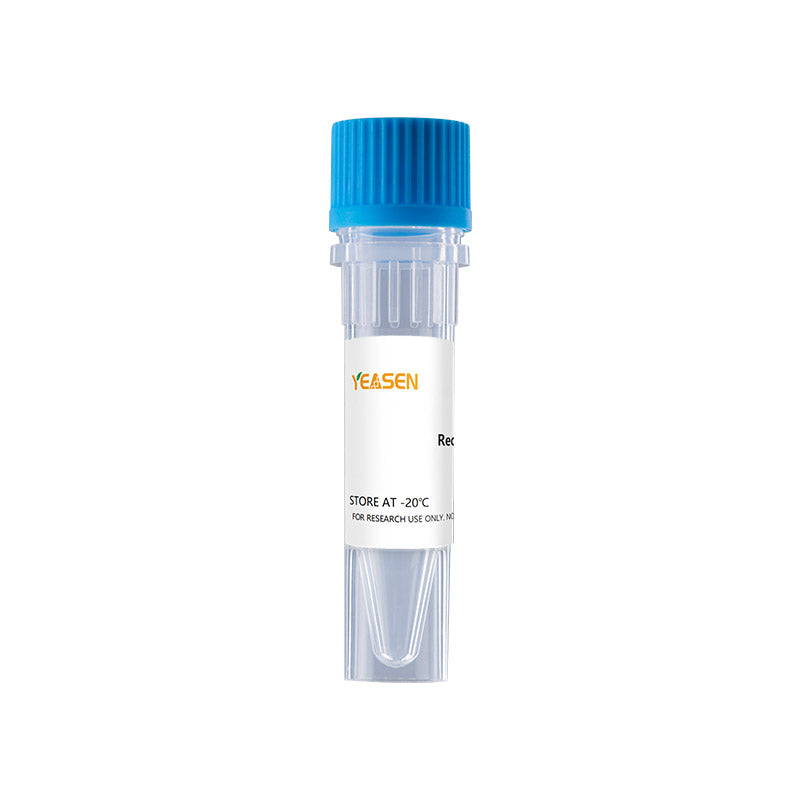Description
Interleukin-22 (IL-22), also known as IL-10-related T cell-derived inducible factor (IL-TIF), was initially identified as a gene induced by IL-9 in mouse T cells and mast cells. It belongs to the IL-10-related cytokine family that consists of six members (IL-10, IL-19, IL-20, IL-22, IL-24/MDA-7, and IL-26/AK155). These proteins share structural homology and some degree of amino acid sequence homology to IL-10. Receptors for these proteins are members of the class II cytokine receptor family. The rat IL-22 coding region corresponding to amino acids 48 - 179 was deduced from a rat genomic clone (Genbank accession numaber AC111483). The N-terminal portion was cloned from rat adipocyte first strands using degenerate forward primers based on the human and mouse IL-22 amino acid sequences in two independent PCR reactions. Rat IL-22 cDNA predicts a 179 amino acid (aa) residue precursor protein with a putative 33 aa signal peptide that is cleaved to generate a 147 aa mature protein, which shares approximately 92% and 79% aa sequence identity with mouse and human IL-22, respectively. IL-22 signals through a heterodimeric receptor complex composed of the IL-22R (CRF2-9) subunit and the ( chain of IL-10R (CRF2-4). In addition, IL-22 also binds to a secreted member of the class II cytokine receptor family called IL-22BP that acts as a natural IL-22 antagonist. IL-22 upregulates acute-phase reactants in the liver and hepatoma cells. In a rat hepatoma cell line, IL-22 has been shown to activate the Jak/STAT and MAPK signaling pathways.
Product Properties
|
Synonyms |
Cytokine Zcyto 18, TIF |
|
Accession |
Q198B4 |
|
Unigene |
|
|
Source |
E.coli-derived Rat IL-22,Leu27-Val172. |
|
Molecular Weight |
Approximately 16.6 kDa. |
|
AA Sequence |
LPINSQCKLE AANFQQPYIV NRTFMLAKEA SLADNNTDVR LIGEELFRGV KAKDQCYLMK QVLNFTLEDV LLPQSDRFQP YMQEVVPFLT KLSIHLSPCH ISGDDQNIQK NVRQLKETVQ KLGESGEIKA IGELDLLFMS LRNACV |
|
Tag |
None |
|
Physical Appearance |
Sterile Filtered White lyophilized (freeze-dried) powder. |
|
Purity |
> 97% by SDS-PAGE and HPLC analyses. |
|
Biological Activity |
The ED50 as determined by inducing IL-10 secretion of human COLO 205 cells is less than 0.5 ng/mL, corresponding to a specific activity of > 2.0 × 106 IU/mg. Fully biologically active when compared to standard. |
|
Endotoxin |
< 1.0 EU per 1μg of the protein by the LAL method. |
|
Formulation |
Lyophilized from a 0.2 μm filtered concentrated solution in PBS, pH 7.4. |
|
Reconstitution |
We recommend that this vial be briefly centrifuged prior to opening to bring the contents to the bottom. Reconstitute in sterile distilled water or aqueous buffer containing 0.1% BSA to a concentration of 0.1-1.0 mg/mL. Stock solutions should be apportioned into working aliquots and stored at ≤ -20°C. Further dilutions should be made in appropriate buffered solutions. |
Shipping and Storage
The products are shipped with ice pack and can be stored at -20℃ to -80℃ for 1 year.
Recommend to aliquot the protein into smaller quantities when first used and avoid repeated freeze-thaw cycles.
Cautions
1. Avoid repeated freeze-thaw cycles.
2. For your safety and health, please wear lab coats and disposable gloves for operation.
3. For research use only!
Payment & Security
Your payment information is processed securely. We do not store credit card details nor have access to your credit card information.
Inquiry
You may also like
FAQ
The product is for research purposes only and is not intended for therapeutic or diagnostic use in humans or animals. Products and content are protected by patents, trademarks, and copyrights owned by Yeasen Biotechnology. Trademark symbols indicate the country of origin, not necessarily registration in all regions.
Certain applications may require additional third-party intellectual property rights.
Yeasen is dedicated to ethical science, believing our research should address critical questions while ensuring safety and ethical standards.

